Do Trout Have Scales?
August 25th, 2022
Trout do have scales, plenty of them. Thousands of them in fact. So do salmon, char, and steelhead.
In the below article, I’ll show you what trout scales look like, which trout species have scales, and how to remove the scales for cooking purposes.
I’ll include pictures and videos of trout I’ve personally caught to help you understand the process.
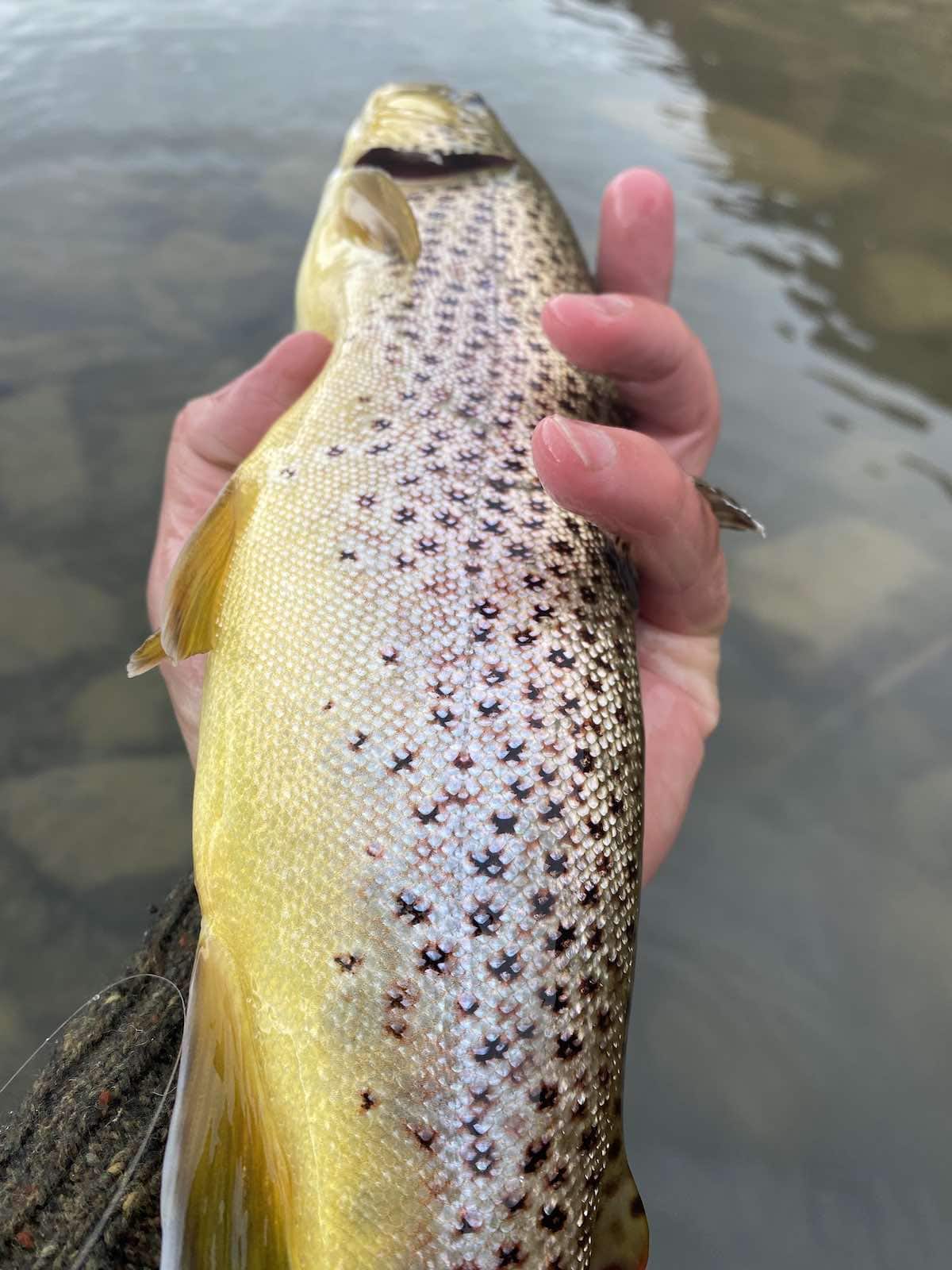
In the above picture, I’m holding a large brown trout I just caught while fishing. If you look closely, you can see thousands of tiny scales covering its skin.
Do Trout Have Scales?
Yes, trout have scales covering their entire body. Their scales are small and smooth, and as such greatly increase their speed and mobility by reducing friction with the water. They also help protect the fish against abrasions which can lead to infection.
Contrary to some myths that abound, all commonly caught trout have scales.
Below I’ll detail each specific species of trout.
If you’re curious, you can also read my article answering the question, “Do trout have teeth?” You may be surprised.
Do Rainbow Trout Have Scales?
Yes, rainbow trout (Oncorhynchus mykiss) have tiny scales covering their body. The scales don’t give the trout its colorful pattern, it’s actually the skin beneath the scales. The scales themselves are colorless.
Rainbows are probably the most commonly caught (and purchased) species of trout consumed in North America.
In the below picture, I’m holding a beautiful rainbow trout that I just caught. If you look closely, you can clearly see the fish’s scales.
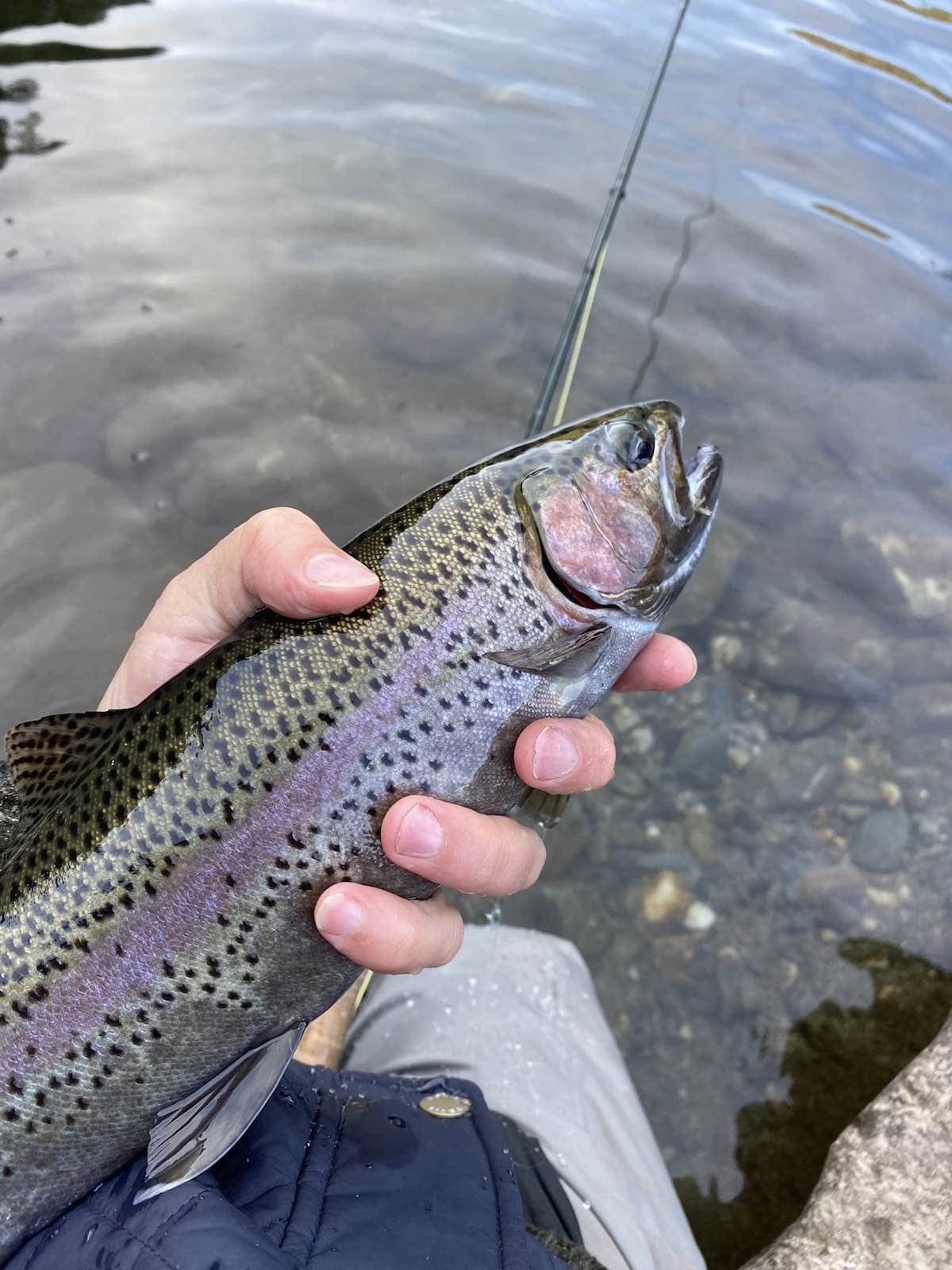
Do Brown Trout Have Scales?
Yes, brown trout (Salmo trutta) have tiny scales on every square inch of their skin. The scales help prevent damage to their skin, and assist the fish in locomotion by reducing friction with the surrounding water.
Here’s a close-up picture of a brown trout I caught, showing its many overlapping scales.
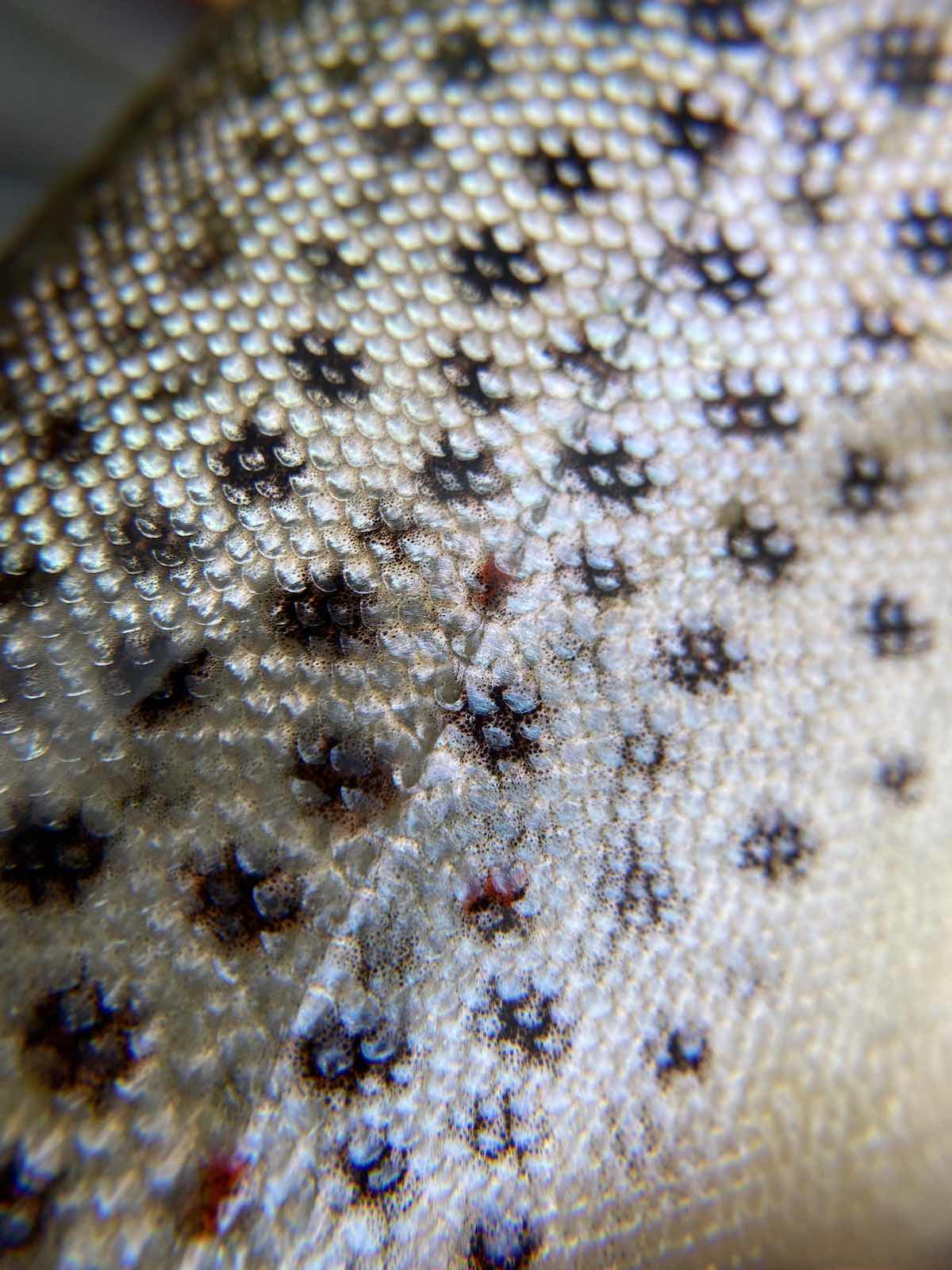
Do Brook Trout Have Scales?
Yes, much like rainbow and brown trout, brook trout (Salvelinus fontinalis) have thousands of scales on their skin. Their scales are very small and smooth, which works to create a streamlined body for the fish. This allows them to swim faster and catch more prey.
As a general rule, brook trout have the smallest adult size, and this is reflected in the size of their scales as well.
They generally live in cold (below 60F) mountain rivers, streams, and creeks.
Do Lake Trout Have Scales?
Lake trout (Salvelinus namaycush) are actually char, and they do have innumerable scales covering their bodies. Being the largest species of trout, their scales are larger as well.
Known as a figh with many names, lakers are also called: mackinaw, lake char, namaycush, touladi, grey trout, paperbelly, and siscowet.
Usually a deepwater fish (except during spring spawning), lake trout is considered a fine food as far as tablefare goes.
Do Steelhead Have Scales?
Yes, steelhead (Oncorhynchus mykiss) are scaled fish that attain a very large size and are considered one of the toughest fighting trout in the world. Interestingly, steelhead and rainbow trout are the same species of fish.
Steelheads anadramous, meaning they live in the ocean and spawn in freshwater rivers. This allows them to attain a much larger size than the normal rainbow trout that live their entire lives in rivers, creeks, and streams.
Do Speckled or Spotted Trout Have Scales?
Yes, both speckled sea trout (Cynoscion nebulosus), also known as the spotted trout, has scales fully covering its body. These fish live in saltwater along the southern and eastern coasts of the United States.
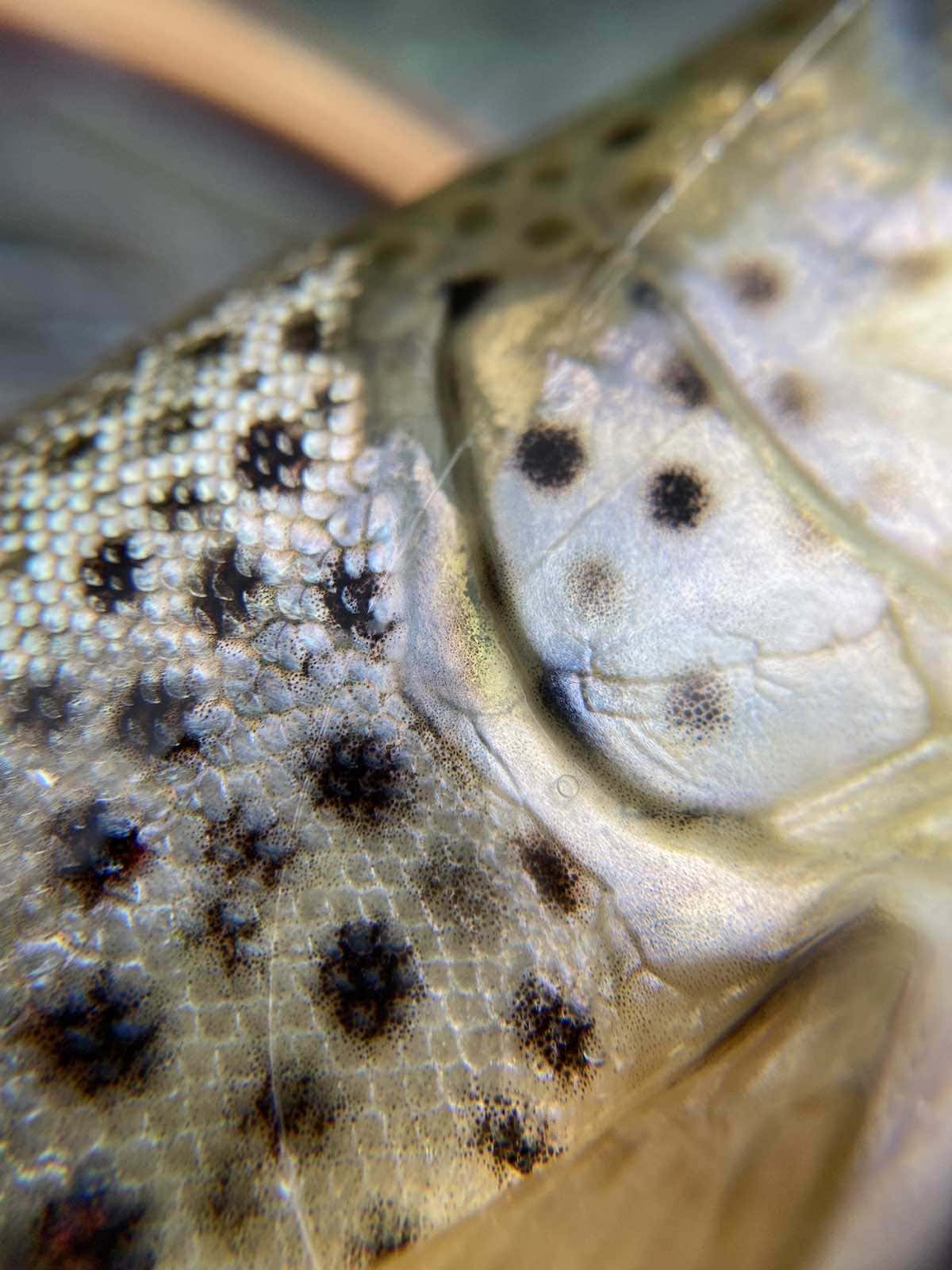
As you can see in the above picture I took, trout even have large scales covering their gill plates.
Do I have to Scale Trout?
No, you don’t have to scale trout prior to cooking them. You can cook them with the scales on, or you can remove the scales, or you can remove the skin entirely to make a filet.
Leaving the scales on your trout
Many folks, mostly anglers (myself included), will simply remove the entrails (guts) and then place the entire fish directly into the frying pan which contains some hot oil or butter.
You can also use a sharp knife to cut filets, leaving the skin and scales in place. Then just cook the fish skin-down.
Once the fish is fully cooked, you can then use a fork to pick apart the flaky meat, leaving the skin on your plate.
Some folks relish eating the crispy skin of trout. It’s not my cup of tea, but to each his own.
Removing the scales
You can use a knife, or a fish descaler, to remove the scales from your trout. Knives aren’t my favorite, and there’s always the risk you’ll cut yourself. I use this scaler, it’s the best I’ve found.
I’ll explain how to remove the scales in the next section.
How to Descale a Trout, Salmon, or Steelhead
If you want to remove the scales of your trout before cooking, make sure to rinsh the fish and then pat it dry with paper towels.
Next you’ll want to secure the tail. There are contraptions you can buy that clamp down on the fish tail, and some folks just put the fish on a clean wooden board and put a nail through the tail.
Once the tail is held securely, take your scaler and begin scraping from the tail towards the head. In other words, scrape “against the grain,” so to speak.
Repeat this process until the scales have all been removed. Be sure to rinse the fish one more time when you’re done.
It usually takes about 30 seconds per side of the fish.
You’re now ready to cook the trout, or cut filets.
Do Trout Have Nutritional Value?
Yes, trout meat is full of healthy fatty acids, iron, calcium, and vitamins B5, C, D, E, and K, among others. Cooked trout is also a low calorie food, with 200 grams of meat amounting to just 180 calories and six grams of fat.
Interestingly, some gold miners in the 1800’s would experience “trout blindness.” This is a condition that occurs in humans when trout is the sole food consumed for a long period of time. The fish meat is deficient is a compound required for sharp vision.
Summary
You’ve now learned that all trout, including char and salmon, have scales of various sizes. Their scales are small, and thus overlooked by some observers.
You can cook trout with the scales intact, or you can easily remove them using a knife or descaling tool.
If you’ve never had freshly caught trout cooked over a campfire, you’re missing out.
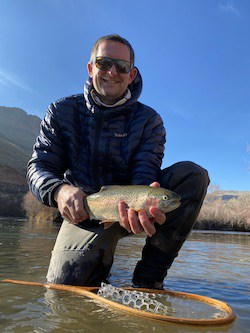
About the Author
My name's Sam and I'm a fly fishing enthusiast just like you. I get out onto the water 80+ times each year, whether it's blazing hot or snow is falling. I enjoy chasing everything from brown trout to snook, and exploring new waters is something I savor. My goal is to discover something new each time I hit the water. Along those lines, I record everything I learn in my fly fishing journal so I can share it with you.
Follow me on Instagram , YouTube, and Facebook to see pictures and videos of my catches and other fishing adventures!


